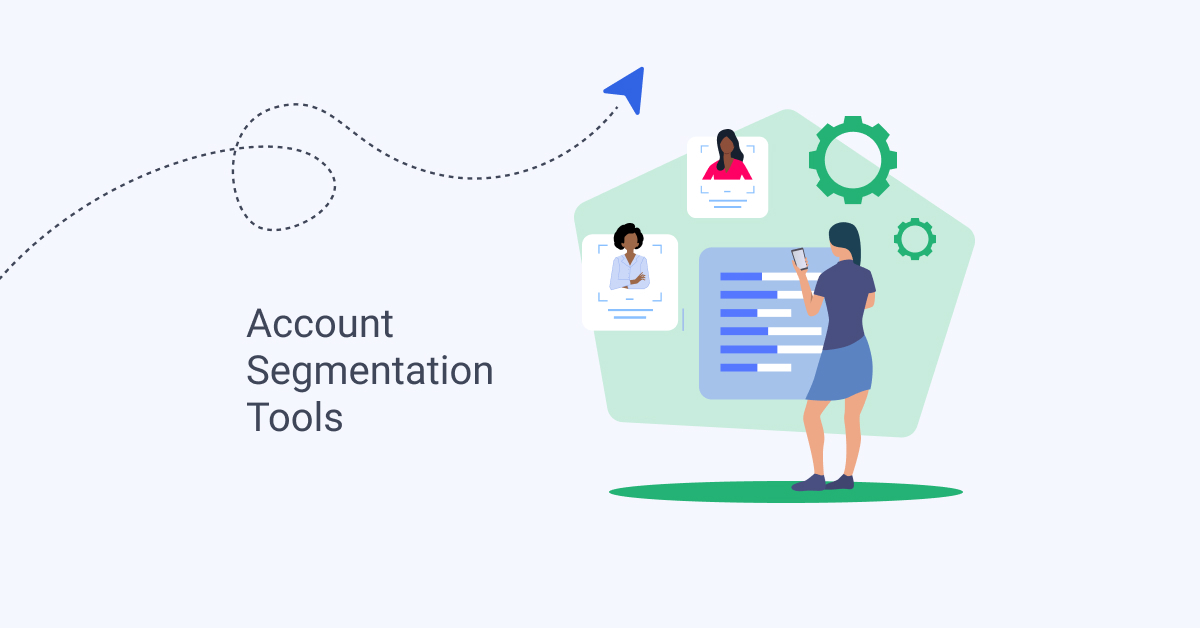
You don’t need us to tell you that taking a generalized, casting-too-wide-a-net approach to sales is almost always ineffective. It leads to disorganization, missed opportunities, and time spent in all the wrong ways and places. So, what’s a better way to go? Utilizing account segmentation. That is, segmenting your book of business by different criteria on a sales map to be able to plan your sales route, identify geographical trends, plan cadences, and create follow ups.
Below, we’ll go further into why account segmentation is important, different ways you can approach segmentation, different categories you can apply for your sales team and company in general, and what tools you can use to make the whole process easier.
Use Account Segmentation to Organize Your Sales Efforts

Map segmentation can help you and your sales team identify patterns and be more precise and organized in your sales efforts. For example, data noted on sales maps allows you to visualize where your prospects and current accounts are, and how they’re distributed across your territory.
When you use some sort of tool to gather as much data about your prospects and current accounts as possible, you can use filters if you’ve got a tool that has that functionality, and classify the accounts into helpful categories. This way you can more clearly analyze your opportunities before you go forth with your efforts in your sales territories. By collecting demographic data on your accounts, you can pick up on trends, and segment them so you can see, for example, if a certain type of business is particularly receptive to your sales process. However, as we will discuss shortly, demographics are only one of the many options available for segmenting your accounts.
Account segmentation will help you target your audience so you’re not doing imprecise sales calls or groupings of them, say, on a sales map. This process will also help you see if there are any accounts on your book of business that are not a good fit, or if you have disorganized or improperly categorized accounts. Ultimately, you’re helping tailor your reps’ efforts to make them more effective and efficient, so that they will yield the greatest return on the investment of their time and hard work.
Account segmentation can also help you identify which accounts are the priority so you can target those ones, and plan out on a sales map how you’ll do so. You can also identify, using segmentation data, which prospects are warm—those who are already looking for a solution like yours—so you can focus your efforts on booking meetings or sales calls with them, rather than spending your time and effort on a huge audience, trying to convince them of why your offer is even worthwhile.
And time isn’t the only thing you’ll save with account segmentation—money too! Rather than trying to make sales calls to everyone, maybe you find out from your CRM that only a certain type of business, demographic, or geographic location is a real prospect that is converting for you. It helps you and your team answer the question of where you can have the highest impact.
Categories of Account Segmentation
So, you know segmentation in sales is important. But how do you approach it? There are generally four categories of segmentation given:
- Demographic (though this one’s primarily used only where B2C/direct-to-consumer sales are concerned)
- Firmographic—wherein you segment your accounts based on organizations’ attributes, such as industry, location, number of employees, or revenue. Here you’re basically doing demographic segmentation, but for organizations rather than individual customers.
- Psychographic—classifying your customers based on behaviors like lifestyle, personality traits, and values
- Behavioral
The Tools to Make Segmentation Happen

Market segmentation software can be extremely helpful—much better than relying on spreadsheets. A segmenting tool like a CRM, or a tool that can integrate with a CRM, can help with map segmentation, and can give you a means to consistently and in a sophisticated manner organize your book of business by different criteria so you can chart your course and know generally how to organize and prioritize your efforts.
Here are some examples:
With Map My Customers, you’re able to do some effective map segmentation by viewing pins on a map and categorizing them by color according to whatever criteria you create. Sales reps and teams enjoy using Map My Customers’ segmentation tools like the groups and filters features and route optimization functionality.
By determining whatever criteria makes sense for your sales efforts and then categorizing your book of business accordingly, then beginning the process of map segmentation, you’re on the right track and doing yourself a real favor as you approach your sales map. Your efforts will be much more organized, and you’ll have an easier time planning the logistics of your sales map, identifying geographical trends, planning cadences, and creating follow ups.





